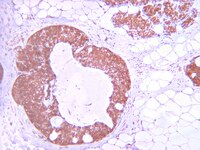07-1398 Sigma-AldrichAnti-phospho-Akt (Thr308) Antibody
This Anti-phospho-Akt (Thr308) Antibody is validated for use in IH(P) for the detection of phospho-Akt (Thr308).
More>> This Anti-phospho-Akt (Thr308) Antibody is validated for use in IH(P) for the detection of phospho-Akt (Thr308). Less<<Recommended Products
Overview
| Replacement Information |
|---|
Key Spec Table
| Species Reactivity | Key Applications | Host | Format | Antibody Type |
|---|---|---|---|---|
| H, M, R, B, Xn, Ca | IH(P) | Rb | Affinity Purified | Polyclonal Antibody |
| References |
|---|
| Product Information | |
|---|---|
| Format | Affinity Purified |
| Presentation | Antigen affinity purified rabbit serum in 0.1M Tris-Glycine (pH7.4), 150mM NaCl, with 0.05% NaN3. |
| Quality Level | MQ100 |
| Physicochemical Information |
|---|
| Dimensions |
|---|
| Materials Information |
|---|
| Toxicological Information |
|---|
| Safety Information according to GHS |
|---|
| Safety Information |
|---|
| Packaging Information | |
|---|---|
| Material Size | 100 µL |
| Transport Information |
|---|
| Supplemental Information |
|---|
| Specifications |
|---|
| Global Trade Item Number | |
|---|---|
| Catalogue Number | GTIN |
| 07-1398 | 04053252408441 |
Documentation
Anti-phospho-Akt (Thr308) Antibody MSDS
| Title |
|---|














